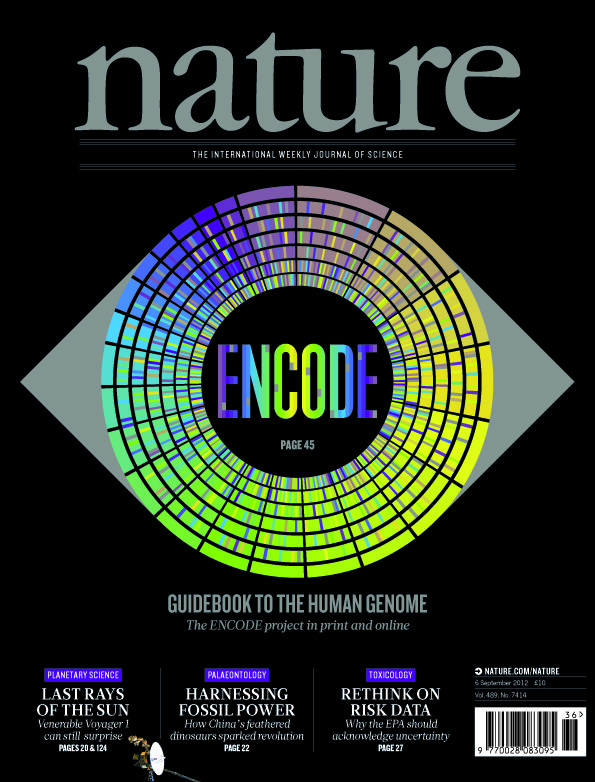ENCODE: a big step in understanding genome function

Given the project dimension, it is no wonder that such an impact occurs. ENCODE (Encyclopedia of DNA Elements) is an encyclopedia of DNA elements that began to develop about ten years ago. This study involved 442 researchers from 32 international laboratories who have presented what has been done to date in 30 articles.
The presentation is special: the articles have been published in three scientific journals (Nature, Genome Biology and Genome Research), but they are open—anyone can read them—and interconnected. In addition, data access and virtual access tools have been offered.
However, if the presentation has achieved some impact in the media, it has not been for this reason, but for the data provided for the dissemination of the results. For example, one of the articles in the journal Nature has highlighted that 80% of the genome is functional, and that is what many media have chosen for its title.
However, the term DNA junk was long known that parts of the genome that do not encode proteins (i.e., that are not genes) have important functions. For example, there are parts that work as gene switches, that is, they are responsible for turning on or off genes and, therefore, creating or not a certain protein. Moreover, it depends on certain fragments of DNA.
Of course, the ENCODE project has published much more. Among others, four million gene switches have been identified and another 120 functions have been found in these non-gene zones.
Watch the ENCODE presentation video from the US Human Genome Research Institute:
Numbers and definitions
These are large numbers that have been intentionally used to “reach more people,” according to Ewan Birney, project coordinator, in his blog. He has also made some nuances about it, recognizing how it is understood to be functional, that 80% of the genome is functional can be excessive.
In fact, the journal Nature also mentions that there have been difficulties in defining the terms, but in the end the authors consider that it is also noteworthy that all researchers have managed to be coordinated and with the same criteria. However, in view of the results of the studies, they have questioned the definition of the gene: “These discoveries force us to review the definition of the gene and the minimum unit of inheritance,” they wrote in this article in Nature.
The authors believe they have done a great job. 147 cell types and 199 transcription factors (proteins involved in transcription but not part of RNA polymerase) have been analyzed, obtaining a lot of data, classified and made available to researchers. “The ENCODE catalogue is equivalent to Google Maps of the human genome,” said Dr. Elise Feingold. And they expect it to be useful, especially in medicine.
But the work is not over. In the coming years they plan to investigate the types of cells and factors that have not yet been studied and that, in addition, Birney has announced that “in the coming decades many contributions will be collected from the experimental and evolution fields and populations, with data from sequences of millions of people!”.
Rear impact
Asier Fullaondo, genetic of the UPV, believes that with ENCODE everything is not finished. According to him, “it is an important project, but many of the things that have stood out in the titles were already known.”
Confess that you will need time to read and analyze everything well, as they have published numerous research at once, but there is no doubt that it will be useful. However, if you do not think it will bring you practical results in the short term. “For me, man is equivalent to sending the Moon,” he said, “it’s something to do, but it doesn’t affect me for the moment.” Usually, this type of research is later.
On the other hand, he has mentioned other projects that may be similar, such as the one that studies the human proteome project and the project of sequencing the genomes of a thousand people (1000 Genomes Project). In the words of Fullaondo: “Thanks to them we know more and more, but we see that behind every door we open there are other doors to open.”
Buletina
Bidali zure helbide elektronikoa eta jaso asteroko buletina zure sarrera-ontzian











